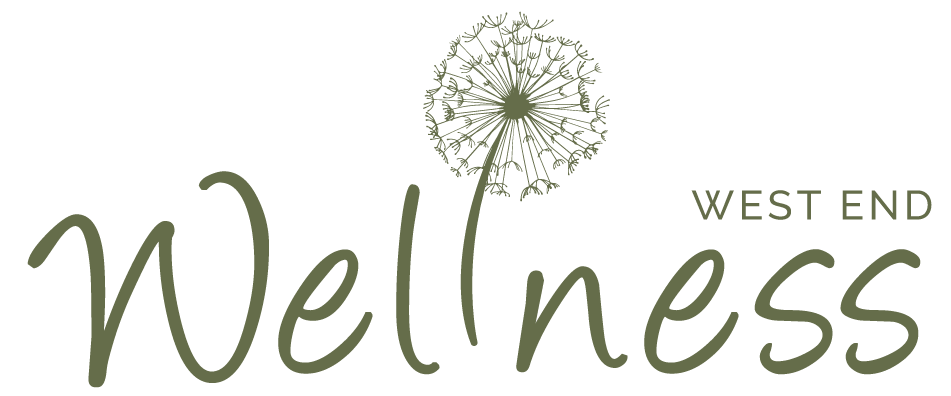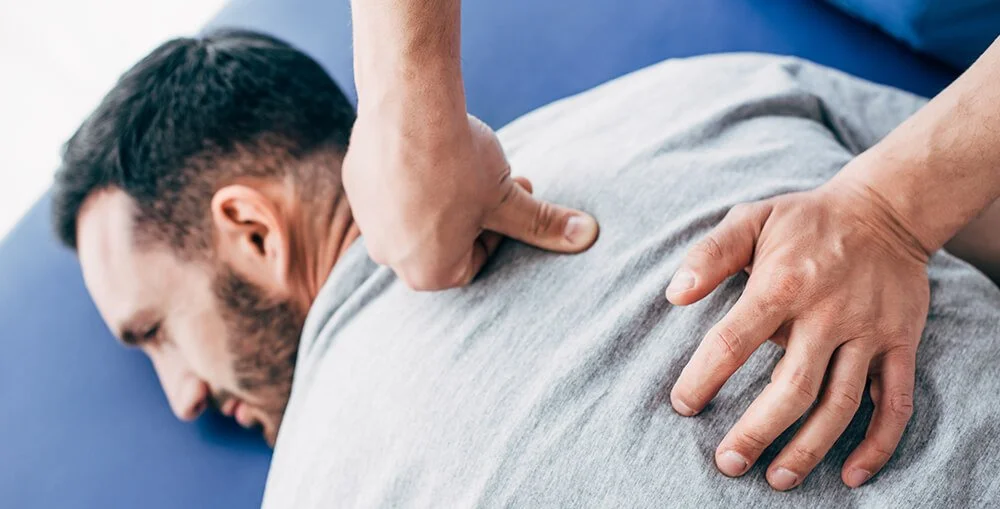The Benefits of RMT Massage for Chronic Pain Management
Table of Contents Show
Quick Summary
Chronic pain comes from various conditions and can significantly impact your life. RMT massage improves blood flow, reduces inflammation, and releases endorphins to help manage pain. Different techniques like Swedish Massage and Deep Tissue Massage target specific areas to bring relief. A registered massage therapist can recommend the best approach for you.
Have you ever suffered from persistent, nagging pain that just won't go away?
Maybe it's a dull ache in your lower back after a long day or throbbing shoulders and neck from too much computer work.
Maybe you dismiss it as nothing, only to find it never seems to go…or maybe you blame it on getting older.
But for millions of people, chronic pain is an all-too-familiar reality that impacts every aspect of daily life.
When that discomfort becomes your constant companion, it can take a major toll on your mood, energy levels, sleep quality and overall well-being. If this sounds like your experience, massage therapy may provide the sweet relief you've longed for.
Conditions that Come with Chronic Pain
Chronic pain isn't a disease itself but a symptom of various underlying conditions.
It can manifest in many ways, from persistent aches to sharp, stabbing pains. Here are some common conditions associated with chronic pain:
Musculoskeletal conditions: This includes issues like lower back pain, osteoarthritis, rheumatoid arthritis, and fibromyalgia, which cause pain in muscles, joints, and bones.
Headaches and migraines: Chronic headaches and migraines are recurring pain conditions that can significantly impact daily life.
Neuropathic pain: This type of pain arises from damage to the nervous system itself. It can feel like burning, tingling, or numbness and can be caused by conditions like diabetes, shingles, or nerve injuries.
Cancer pain: Chronic pain can be a symptom of cancer itself or a side effect of treatment.
Endometriosis: This condition, where tissue similar to the uterine lining grows outside the uterus, can cause chronic pelvic pain.
Remember, this is not an exhaustive list and chronic pain can also be linked to other conditions. If you're experiencing any of these, a massage therapist might be able to help! Massage can't cure the underlying condition, but it can be a powerful tool for managing chronic pain.
If you're scanning for a safe, natural way to reduce pain, Myofascial Release therapy may be the perfect solution. Learn more, by clicking the link.
Who Is At Risk Of Having Chronic Pain?
While chronic pain can affect anyone, certain factors increase a person's risk. These include older age, previous injury, obesity, smoking, depression, and jobs involving repetitive motions or heavy lifting. Managing stress, maintaining a healthy weight, and practicing proper body mechanics can help prevent the onset of chronic pain.
How Massage Therapy Can Treat Chronic Pain
Massage therapy takes a whole-body approach to relieving chronic pain rather than just masking symptoms.
Massage increases blood flow by manipulating and applying pressure to soft tissues, reducing inflammation and muscle tension. It also stimulates the release of endorphins, the body's natural painkillers.
The research shows that massage therapy can be effective in reducing pain, improving function, and enhancing the quality of life for people with chronic pain conditions. Techniques like Swedish, trigger point, deep tissue, and myofascial release have been found to be beneficial.
Research Studies that Show Effectiveness of Massage for Chronic Pain
A real-world study on primary care patients with chronic low back pain found that massage therapy produced clinically significant improvements in pain, disability, and quality of life (1). Older adults saw better outcomes than younger adults.
A systematic review and meta-analysis found that massage therapy was effective in treating pain compared to sham, no treatment, and active comparators (2). Massage was also beneficial for reducing anxiety and improving health-related quality of life.
Massage therapy helps manage chronic pain by improving blood flow
Types of Massage Techniques Ideal for Chronic Pain
Swedish Massage
One of the most popular Western massage styles, Swedish massage uses long strokes, kneading, and friction techniques to relax the entire body. It helps release muscle tension and increase flexibility.
Swedish massage can help reduce chronic pain by increasing blood circulation and lymph flow, which brings more oxygen and nutrients to muscles and helps remove waste products.
Swedish massage has been shown to decrease the level of the stress hormone cortisol, which can contribute to chronic pain, and increase the levels of endorphins, the body's natural pain relievers.
Deep Tissue Massage
This more intense massage focuses on realigning deeper muscle and connective tissue layers. It is beneficial for chronic musculoskeletal issues like low back or neck pain.
A deep tissue massage targets the deeper layers of muscle and connective tissue to release chronic patterns of tension and restrictions, which can be a major contributor to chronic pain. (1)
Deep tissue treatment is effective in reducing pain and improving range of motion in people with chronic low back pain, neck pain, and other musculoskeletal conditions. (2)
Trigger Point
Trigger points are hypersensitive areas of muscle that refer to pain elsewhere in the body. Targeted trigger point therapy releases these knots to alleviate radiating chronic pain.
When you experience a trigger point massage, it is focused on releasing hyperirritable spots in the muscle, known as trigger points, that can refer pain to other areas of the body and contribute to chronic pain.
By helping to relieve the muscle tension, you will start to experience improved circulation, which can give your body a break from chronic pain.
Myofascial Release
Myofascial release eliminates pain caused by muscle immobility and adhesions in the body's fascia (connective tissue). It improves the range of motion and reduces inflammation.
Gentle, sustained pressure and stretching are used to release restrictions in the fascia, the connective tissue that surrounds and supports the muscles, which can be a source of chronic pain.
Myofascial release therapy is effective in reducing pain and improving function in people with conditions like chronic low back pain, neck pain, and fibromyalgia. (2)
Registered massage therapists are highly trained to determine which techniques are most appropriate based on your chronic pain condition and medical history. With regular massage treatments, you can experience long-lasting relief and improved physical function.
Chronic pain is pain that lasts longer than 3 months.
FAQ
What type of massage is best for chronic pain?
For chronic pain relief, consider deep tissue massage incorporating techniques like acupressure, trigger point therapy, kneading, myofascial release, and rolling. These techniques target deeper muscle layers and connective tissues to address chronic pain sources like knots, scar tissue, and muscle spasms. Remember, a consultation with a registered massage therapist (RMT) is key to determining the most suitable approach for your specific condition.
What to do when chronic pain is unbearable?
If chronic pain becomes severe, it's important to seek professional medical advice. While RMT massage can be a valuable tool, there might be a need for a broader treatment plan. Here are some options your doctor might recommend:
Pain medication: This can provide temporary relief while addressing the underlying cause.
Physical therapies: Techniques like heat/cold therapy, massage (including RMT!), hydrotherapy, and exercise can promote healing and manage pain.
Psychological therapies: Techniques like cognitive behavioural therapy (CBT), relaxation methods, and meditation can help manage stress and improve coping skills.
Mind-body techniques: Acupuncture may offer pain relief for some individuals.
What is the most natural painkiller?
Your body produces its own painkillers called endorphins. Released by the hypothalamus and pituitary gland, endorphins act in response to pain or stress. They not only reduce pain perception but also create a general sense of well-being. RMT massage can be a natural way to stimulate endorphin release, promoting pain relief and relaxation.
What makes chronic pain worse?
Chronic pain creates a vicious cycle that can worsen over time. Here's how:
Disrupted Sleep: Pain can make it difficult to fall asleep or stay asleep, leading to fatigue and a weakened body that's more susceptible to pain.
Low Mood and Depression: Chronic pain can be frustrating and isolating, impacting mood and potentially leading to depression. Depression can then lower pain tolerance, making the pain feel worse.
Decreased Activity: Due to pain, you might avoid physical activity. However, inactivity can lead to muscle weakness and stiffness, ultimately worsening pain.
Unhealthy Lifestyle: Poor diet, smoking, and lack of weight management can contribute to inflammation and decreased blood flow, both of which can exacerbate chronic pain.
Conclusion
For those living and working in the beautiful Vancouver city, known for its dynamic lifestyle and natural beauty, living with chronic pain can feel like a significant barrier to enjoying all that it has to offer.
That is why if you are looking for a way to heal, Acupuncture, with its deep roots in Traditional Chinese Medicine, presents a promising path to pain relief that many have yet to explore.
Through the gentle insertion of needles, acupuncture aims to rebalance your body's energy, stimulate the nervous system, and promote the release of natural painkillers and anti-inflammatory responses.
We hope you have learnt and now better understand how acupuncture can relieve common pain conditioners such as headaches, back pain and knee pain.
With its roots in ancient wisdom and a growing body of modern research supporting its benefits, it's worth considering for anyone looking to improve their quality of life.
We have many personal success stories from local Vancouver residents who further illustrate the potential of acupuncture to improve quality of life where other treatments may not have succeeded.
Are you ready to take the first step towards a pain-free life?
If you have any further doubts or questions regarding this subject or another treatment, contact one of our experienced Acupuncturists or Registered Massage Therapists here at West End Wellness Clinic. You can either give us a call or make an appointment.
Disclaimer: Please remember this article is for informational purposes only and should not replace professional medical advice. Please consult a healthcare provider or someone with the correct qualifications before starting any new exercise or treatment program.




